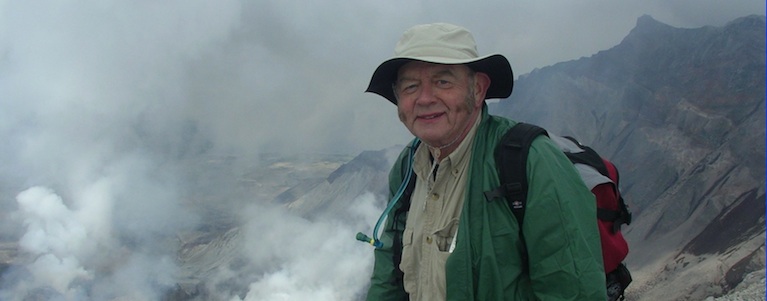Steve is not an aurora
Every few years, a thin river of purple light slashes through the skies of northern Canada.
A group of citizen skywatchers who witnessed it on July 25, 2016 decided to give the “magnificent, mysterious, borderline-miracu-lous” phenomenon a fittingly majestic name: “Steve.”
A scientific team working on other projects had the opportunity to measure Steve: At about 200 miles (300 km) above Earth, the air inside Steve blazed at about 5,500 degrees Fahrenheit hotter than the air on each side and moved about 500 times faster. This band of hot, surging gas was about 16 miles (25 km) wide and 600 miles long tall.
Steve does not contain the tell-tale traces of charged particles blast-ing through Earth’s atmosphere that auroras do. Steve, therefore, is not an aurora at all, but something en-tirely different: a mysterious, large-ly unexplained phenomenon that the researchers have dubbed a “sky glow.”
Steve has been a familiar night phenomenon for decades.
This article contains excerpts from space.com.
Info: shpr.fyi/2BUAJU5
Earth reversed its magnetic field in 150 years
Approximately 98,000 years ago, a magnetic reversal occurred over just a century and a half, approxi-mately 10 times faster than had been believed possible.
In a magnetic reversal, compasses would point south instead of north.
Earth’s magnetic field is generat-ed by liquid metal churning at depths 1,700 miles below the sur-face. But sometimes, that churning can change slightly, affecting the magnetic field.
There have been 183 reversals over the last 83 million years. A brief complete reversal, known as the Laschamp event, occurred only 41,000 years ago during the last glacial period. That reversal lasted only about 440 years
If such rapid polarity changes occurred in the future, they could severely affect satellites and human society.
This article includes excerpts from phys.org and Wikipedia.
Info: shpr.fyi/2ojIDge
A critical vulnerability has been discovered in HP Fax/Printers
Criminals have found a way to get into our home and business networks—through our Fax machines from the phone line! Really!
All Fax devices should be updated immediately, and it’s blessedly simple:
Go here: bit.ly/2vHis7i
Lookup device.
Download executable.
Run it.
Select discovered device and go.
Info: grc.com
Seattle tunnel could open as early as this fall
The tunnel under downtown Seattle will move Highway 99 traffic off the ugly, old, deteriorating Alaska Way Viaduct.
The tunnel is mostly finished, with workers now striping the pavement and installing signs along the walls.
But first drivers must deal with a 3-week viaduct closure to realign SR 99 into the tunnel.
Info: shpr.fyi/2oir4gH
Canadian expert says Washington forests need much more intentional burning
“Climate change plays a significant role in this,” said Robert Gray, a fire management consultant who’s worked in the US Forest Service in Washington state and across the west. “It’s not entirely climate change, but certainly climate change in the sense that the amount of burned area has correlated quite strongly with increases in global temperatures. We have significant increases in fire season; in California, they are talking about a year-round fire season. Other states and territories here in BC, we’ve got an extended fire season now.”
“We’ve got a lazy jet stream, which is giving us these stagnant, high-pressure systems that just park over parts of the west for weeks at a time. Historically, we had a strong-er jet stream that moved things around a bit more,” he said.
“In Washington state, there is just not enough burning going on,” Gray said. “Nowhere near enough compared to the scale of the hazard. Our treatments have to match the scale of the disturbance. So if we are seeing 10,000 or 20,000 acre fires, our treatment areas have to be similar size. And they’re just not and they are porous. There’s 200 acres over there, another 1,000 acres over there … they are too few and too dispersed.”
Above article includes excerpts from mynorthwest.com.
Info: shpr.fyi/2wpsrxA


